Why Do We Keep Lord Ganesha at Home?

People get Ganpati murti for home because they believe he’s a source of good fortune, removing obstacles, bringing positivity, and safeguarding homes. Having his idol is thought to ensure a smooth beginning for new endeavours and foster a peaceful environment making it a favourable choice for any home. Worshipping Lord Ganesha during festivals like Ganesh Chaturthi and Diwali is a common practice, as it adds to the joy and spiritual significance of these celebrations.
Best Time To Bring Bappa At Home
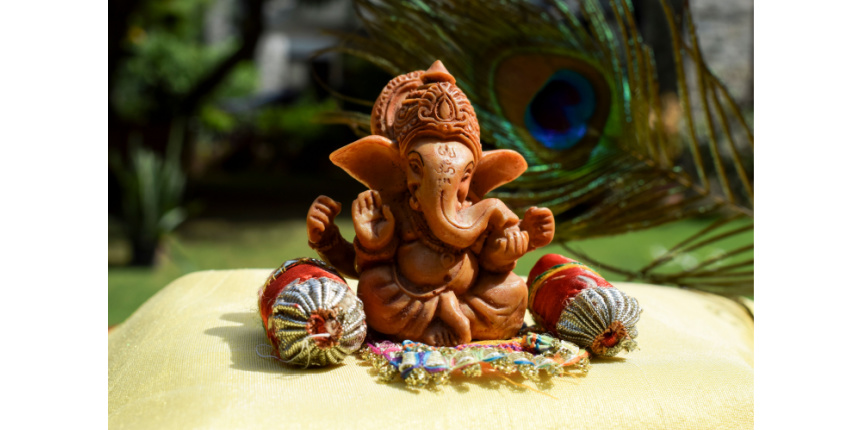
The best time to get Ganpati Bappa murti for home is during Ganesh Chaturthi. Generally, this day falls on the fourth day of the bright half of the Hindu lunar month Bhadrapada. Apart from Ganesh Chaturthi and Diwali, other lucky times to welcome Lord Ganesha include Navaratri and Sankashti Chaturthi. During Navaratri, Ganesha is honoured as part of a nine-day celebration of the Divine Mother. Sankashti Chaturthi, which happens every month, is also seen as a fortunate day to invite the best Ganesh murti at home for blessings and prosperity.
But, if you have missed the festivities, then you can also bring Edamuri Ganesha at home. It is believed that any day can be good for this, but it’s wise to consult a priest for the best time.
Directions and Locations for The Lord:
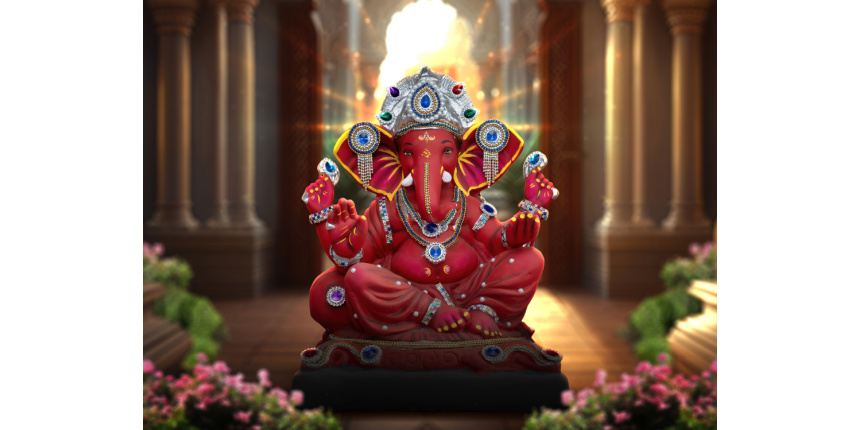
Placing Lord Ganpati’s idol in the north or east direction is considered very lucky. It’s believed to bring good vibes and blessings to your home. For these directions, a sitting idol of Lord Ganesha, which represents calm and positive energy, is ideal.
If this Ganesh idol facing direction in the home is not available, the northeast corner is also a great place for the Ganpati idol; it adds positive energy to your home. For this direction, a sitting idol with the trunk turning left is recommended.
Apart from the above, you can consider other places. While it’s not ideal, you can place the idol in the east as long as the side face Ganesha is west. The south is also not the first choice, but if needed, position the idol to face north to reduce any potential negativity. If you must place it in the southeast or southwest, ensure it faces the northeast or northwest, respectively, to maintain positive energy.
Now that we are clear on the directions, let’s continue with the locations!
Bedroom:
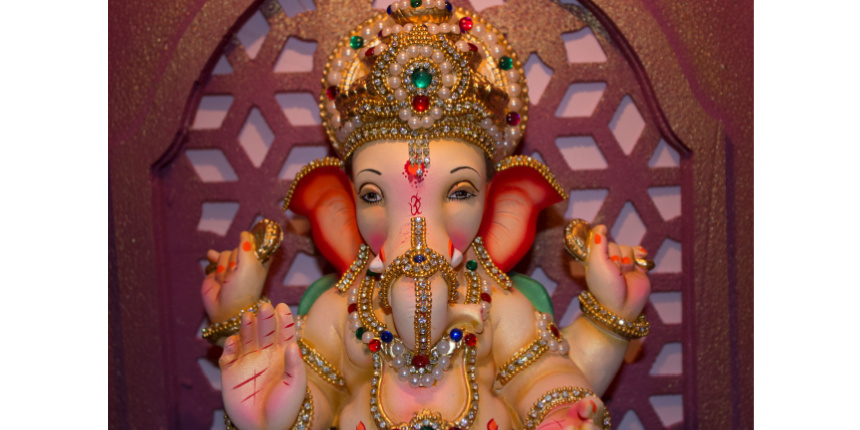
It’s generally not recommended to place the Ganpati idol in the bedroom. The bedroom is considered intimate, and putting the idol here may not align with Vastu principles. If you still wish to have an icon in the bedroom, choose a small, peaceful-looking idol. A sitting idol with a left-turning trunk can be a suitable option.
Entrance:

Ganesh’s statue for the home entrance is highly auspicious. It welcomes blessings and positive energy as you enter your house. For the door, a medium-sized sitting idol with a left-turning trunk is considered ideal. Make sure that the back of the Ganesh idol home entrance faces the main entrance of your home. It should also be visible to anyone entering your home.
Kitchen:
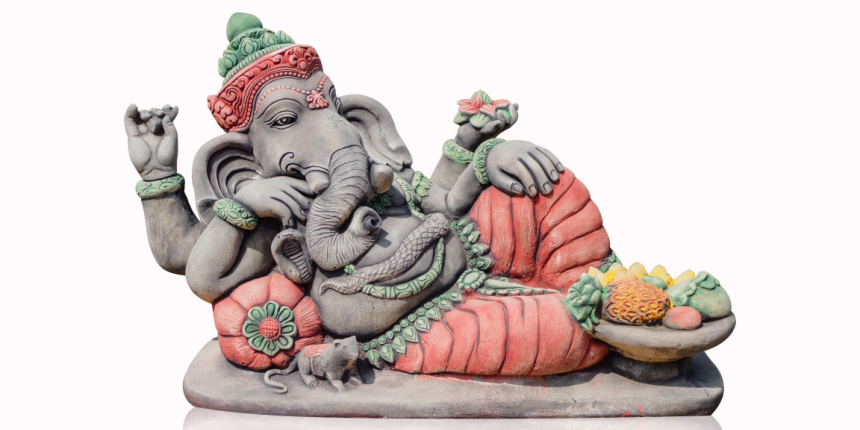
It’s best to avoid placing the idol in the kitchen. However, if you have a separate puja area within the kitchen, you can keep the idol there.
Living Room:
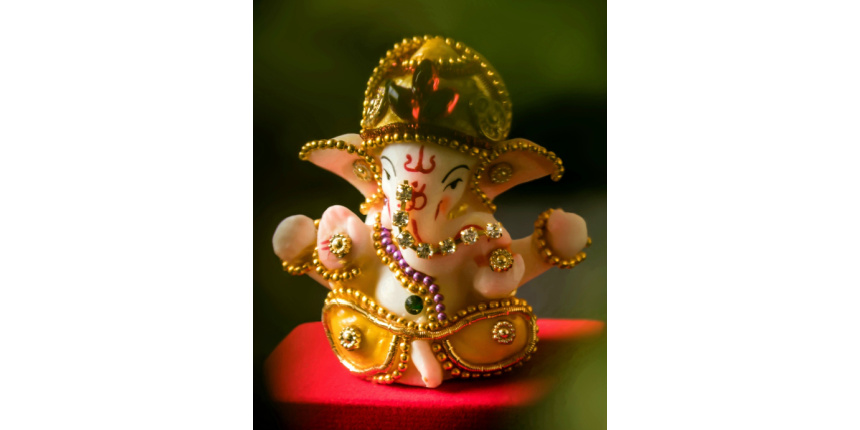
The living room is a common and suitable place for Lord Ganpati’s idol. It’s where guests gather and where family activities take place. In the living room, you can opt for a larger sitting idol with a left-turning trunk. A decorative and eye-catching idol can be the centrepiece of this space.
Study Room:
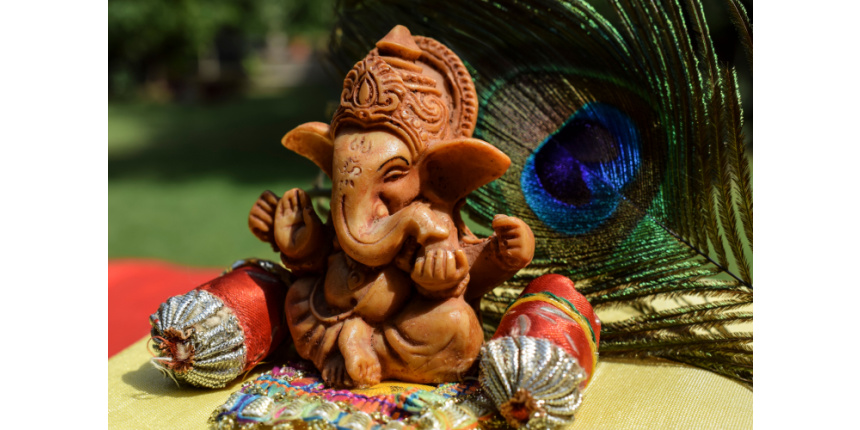
Placing the idol in the study room is considered beneficial. In the study room, a smaller sitting idol with a left-turning trunk is a good choice. It should be placed on a clean and clutter-free study desk.
Outside:
You can get Ganesh murti for the home entrance garden or balcony if you have one. Just ensure it’s protected from the elements if kept outdoors. For outdoor settings, choose a durable material like stone or metal for the idol. A standing or sitting idol with a left-turning trunk can be placed in a garden or balcony to create a serene atmosphere.
The Don’ts

When the work is this auspicious, it’s mandatory to know the don’ts of the procedure. Here is the list of items you must avoid while welcoming Lord Ganesha into your home.
- Don’t put the idol in the bathroom or near the toilet. These places are considered impure and are not suitable for religious symbols.
- According to Vastu, having more than one Ganesha idol in the same house can create confusion and is not in harmony with Vastu’s principles.
- Placing the idol under a staircase is not recommended. It’s linked to negative energy and can block positive vibes.
- Avoid putting the idol in storage rooms or garages, as these areas are often cluttered and unrelated to spirituality.
- Keep the idol away from cluttered or messy spaces, as it may affect the positive energy flow.
- Please don’t place the idol outside with its back facing the main entrance of the home. It’s considered unlucky and can symbolise the deity turning away from your home.
- Avoid areas in your home with negative feelings or associations.
- Bedrooms and utility areas like laundry rooms have specific purposes. Placing the idol in these areas may not be appropriate.
Is Every Idol Right?
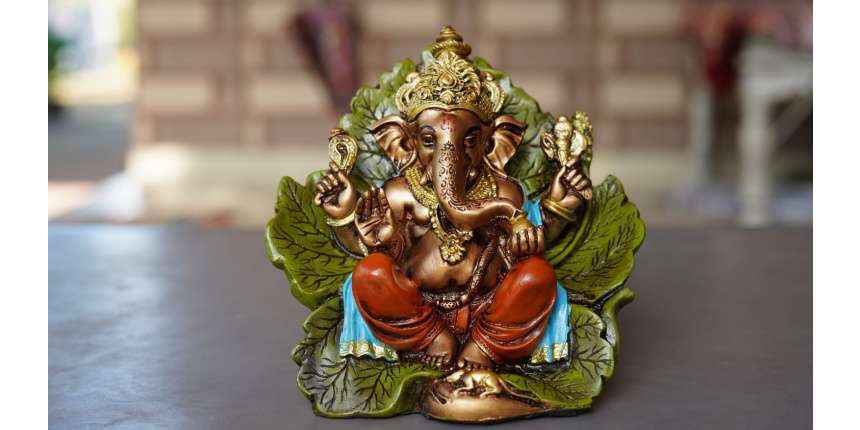
While the presence of Lord Ganesha at home is pure bliss, there are some things that can tarnish the charm. The energy each part of the idol emits in your home determines your wealth and prosperity in future. So, it’s important to know the meaning of different Ganesh idols before bringing one to your place.
Material:
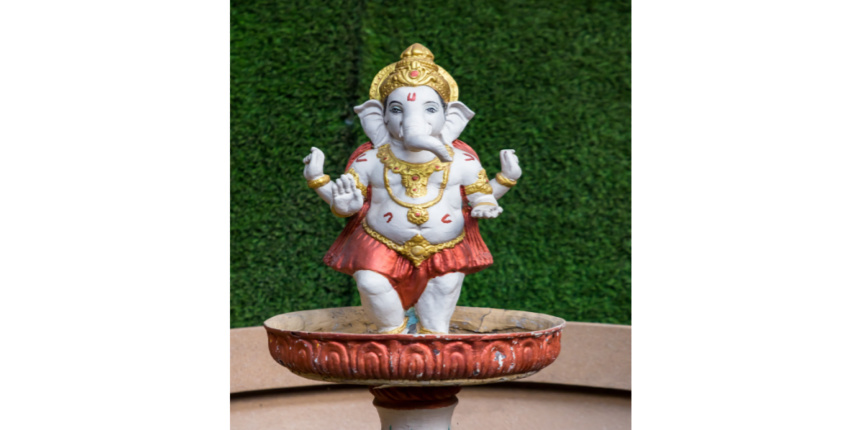
When choosing the best Ganpati Murti for your home, the material plays a significant role. Given below are the most common and ideal materials.
- Clay: Clay idols are not only eco-friendly but also perfect for immersion in water during festivals like Ganesh Chaturthi. They are believed to be pure and harmonious.
- Marble: Marble idols are known for their durability and elegance. They can be a long-term addition to your home, symbolising the permanence of Lord Ganesha’s blessings.
- Metal (like brass): Metal idols, particularly those made of brass, are admired for their traditional appearance. They can last for generations, becoming cherished family heirlooms.
- Wood: Wooden idols have a unique charm and warmth. They need regular care but are believed to attract prosperity and blessings.
Trunk Direction:
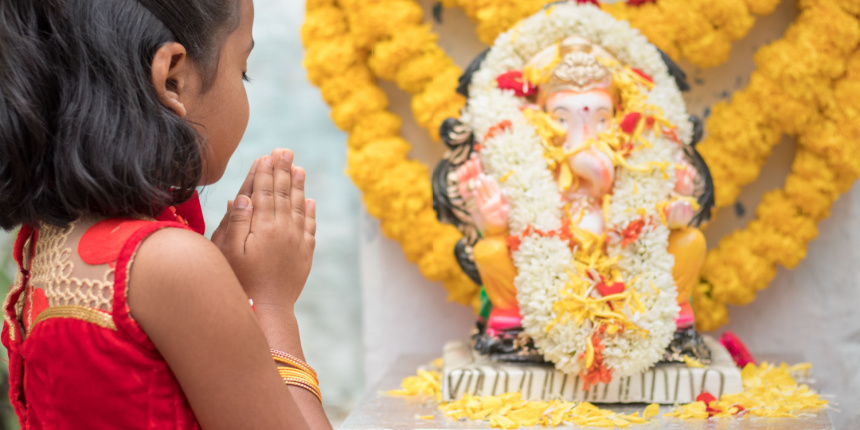
The direction of Lord Ganesha’s trunk holds meaning and should align with your intentions.
- Left-Trunked: A Ganesha idol with a trunk slanting to the left is recommended for a sense of peace, calmness, and harmony within your home.
- Right-Trunked: Right-slanting trunks represent a more active and fiery nature. They are believed to yield quick results and bring a sense of energy and vitality.
- Straight Trunk: Ganesha with a straight trunk is rare and unique. It is said to promote the mental well-being of children, making it a favourable choice for students and families with kids.
Posture:
The posture of the Ganesha idol also influences the energy it imparts to your home.
- Sitting: A sitting Ganesha promotes positive energy, a peaceful environment, and spiritual growth. This posture signifies stability and focus.
- Reclining: A reclining Ganesha is associated with luxury, comfort, and prosperity. It symbolises relaxation and abundance.
- Standing: Lord Ganesha, in a standing posture, is often depicted with one leg raised and the other resting on the ground. It conveys the idea that Ganesha is always ready to protect.
Modak and Mouse:
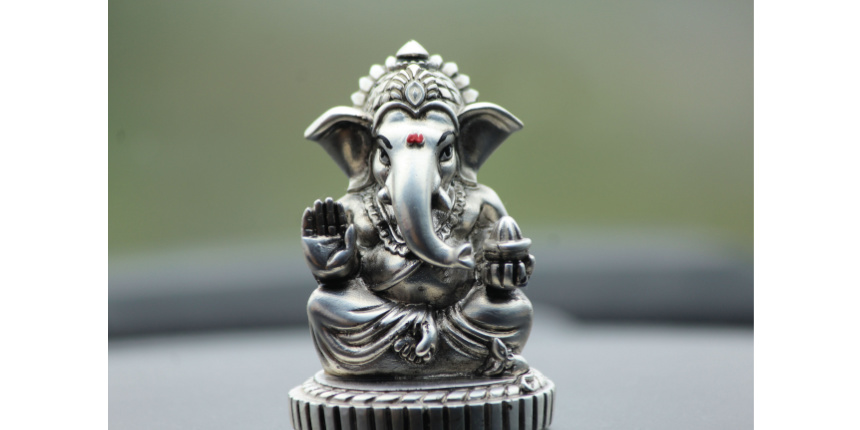
When choosing a Ganesha idol, ensure it holds a modak and is accompanied by a mouse. The modak represents his attributes, and the mouse is his mode of transportation.
Colour:
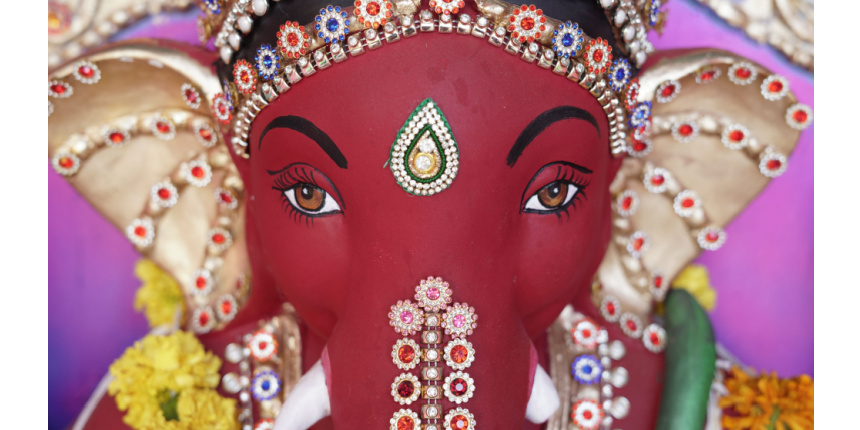
The colour of the Ganesha idol can greatly influence your home’s energy. Here are some suggestions in case you are wondering, “Which colour Ganesha idol is good for home?”
- White: White Ganesha represents purity, peace, and positivity. It is ideal for those seeking a harmonious and serene atmosphere in their home.
- Vermilion (Red): Red Ganesha significance means self-growth and development. It is believed to inspire personal progress and motivation.
- Black: Black Ganesha is a symbol of strength, divinity, and power. It exudes a sense of grandeur and represents the might of the Lord.
Dhoti Colour:
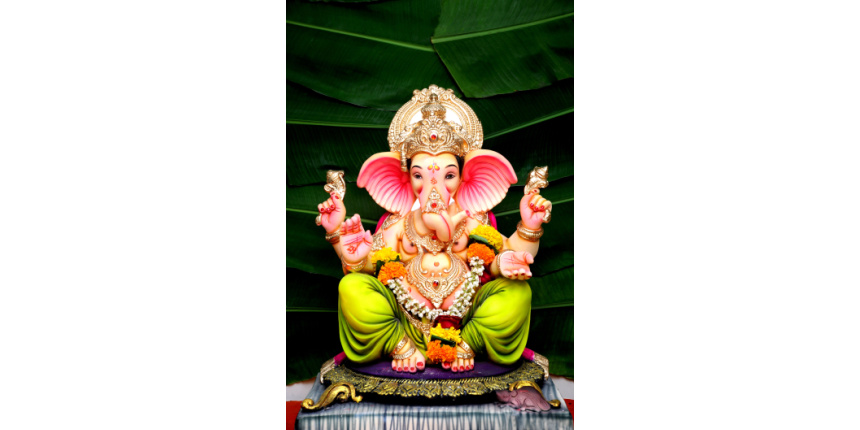
The colour of Lord Ganesha’s dhoti is yet another factor to take into consideration when selecting an idol for your home. Different colours hold diverse meanings. Here are some suggestions alongside Ganpati dhoti colour images for your deeper understanding.
- White Dhoti: White is often associated with purity, peace, and spirituality. A Ganesha idol donning a white dhoti represents purity of thought and a serene environment in the home.
- Saffron or Red Dhoti: Saffron or red symbolises power, strength, and courage. An idol with a saffron or red dhoti is chosen to infuse the home with energy, determination, and positive vitality.
- Yellow Dhoti: Yellow is the colour of knowledge and wisdom. A Ganesha idol wearing a yellow dhoti signifies the pursuit of knowledge and the blessings of wisdom in the household.
- Green Dhoti: Green represents harmony, balance, and growth. It is often selected to bring harmony and a sense of balance to the living space.
- Multicoloured Dhoti: Some Ganesha idols have multicoloured dhotis with intricate patterns. This adds a vibrant and artistic touch and is only chosen for its aesthetic appeal.
Dhoti Style:
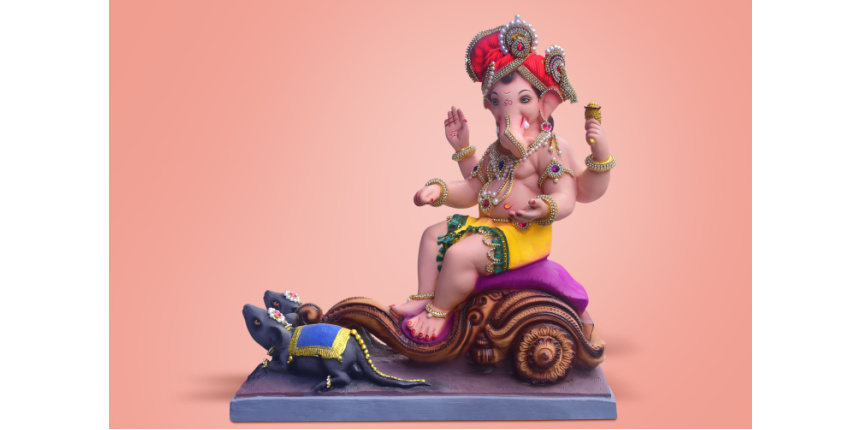
Apart from Ganesha’s Dhoti and Ganesha’s colour meanings, the style of Lord Ganesha’s Dhoti is another important aspect to consider. Lord Ganesha is often depicted wearing a dhoti, and the style of the dhoti can carry its own symbolism.
- Short Dhoti: An idol with a short dhoti is a representation of a playful and childlike form of Lord Ganesha. It is often chosen to create a lively and cheerful atmosphere in the home.
- Long Dhoti: A Ganesha idol with a long dhoti signifies a more traditional and mature aspect of the deity. It is believed to bring a sense of wisdom, knowledge, and tradition into the household.
- Detailed Dhoti Patterns: Some idols have intricate and detailed patterns on their dhotis. These patterns can carry cultural and artistic significance.
Colour Combinations To Look For
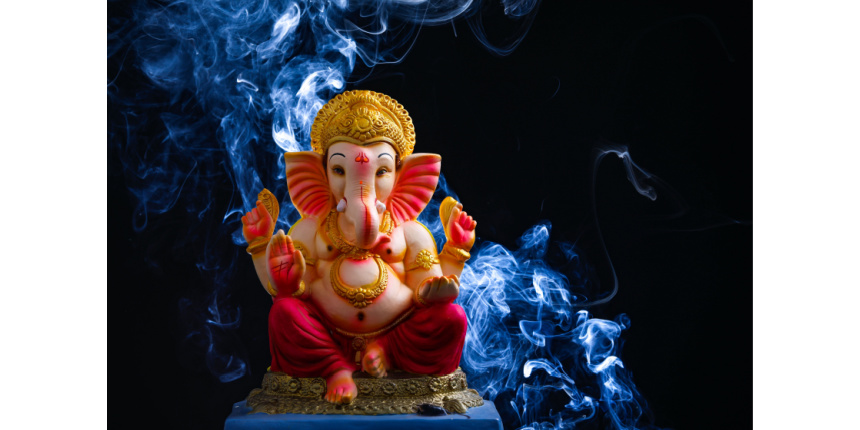
We are looking at everything, which means Ganpati colour combinations as well. We know its hard to combine the colours mentioned above. Thus, this section is created! Behold, the right colour combinations are waiting for you.
- Red and Gold: This mix represents energy and wealth, often seen in Ganesha’s traditional attire. It’s believed to invite blessings and success.
- White and Silver: This combo shows purity and divine energy, creating a calm and sacred atmosphere at home.
- Yellow and Orange: Yellow signifies wisdom, while orange represents enthusiasm and creativity, fostering intellectual growth and positivity.
- Green and Gold: Green signifies harmony and balance, and gold represents prosperity. Thus, this Ganpati murti colour combination is known to maintain equilibrium in your surroundings.
- Silver and Blue: Silver embodies grace, and blue represents the vastness of the divine, promoting spiritual connection and serenity.
- Saffron and Yellow: Saffron represents purity and spirituality, while yellow signifies intelligence and creativity, enhancing your spiritual journey and mental clarity.
Conclusion
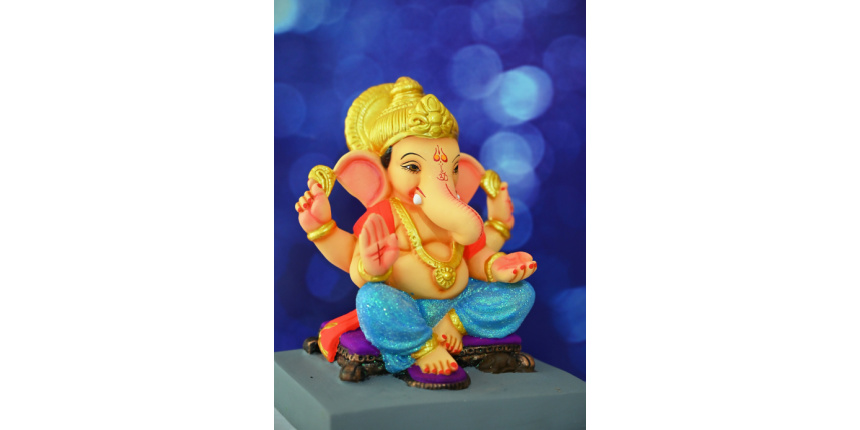
In India, Lord Ganesha is revered for helping people in difficult times. People welcome Ganesha into their homes during special occasions like Ganesh Chaturthi and Diwali. Choosing a Ganesha idol involves considering the material, trunk direction, posture, and colour. These factors affect the energy in your home. Where you place the Ganesha idol matters, too. Vastu guidelines suggest the North, East, and Northeast are good directions. Different rooms in your home offer unique possibilities for placing the idol. Following these guidelines ensures that Lord Ganesha brings positive energy and blessings to your home.
These vastu guidelines are designed on common grounds. If you want personalised guidance on how to welcome Lord Ganesha at home, then you can connect with the experts at Square Yards!
Keep following for more!
